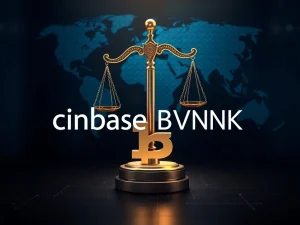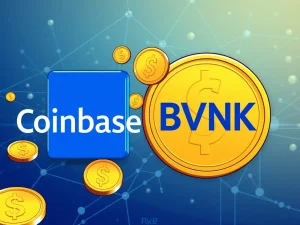Unstoppable Future? Solana vs Ethereum: Decoding the Ultimate Blockchain Showdown

In the electrifying world of cryptocurrency, two blockchain titans, Solana and Ethereum, are constantly vying for dominance. It’s a captivating tale of innovation, adoption, and the relentless pursuit of becoming the go-to platform for the decentralized future. But when we dissect the core elements that drive value in crypto – price action, real-world utility, and a thriving user base – the question emerges: In this high-stakes blockchain battle, who is truly poised to claim victory? Let’s delve deep into the Solana vs Ethereum narrative and explore which blockchain is currently leading the charge and what the future might hold.
Decoding the Blockchain Battle: Solana vs Ethereum
To understand the Solana vs Ethereum debate, we need to look beyond the hype and examine the fundamental pillars of each blockchain. Ethereum, the veteran, boasts a rich history and a massive ecosystem. Solana, the newcomer, is known for its blazing speed and low costs. Both aim to revolutionize industries, but their approaches differ significantly. Think of it as a race between a seasoned marathon runner (Ethereum) and a lightning-fast sprinter (Solana). Both are impressive, but built for different terrains.
Ethereum: The Established Giant and Its Strengths
Ethereum, the pioneer of smart contracts, has undeniably laid the foundation for much of what we see in the crypto space today. Its strengths are undeniable:
- First-Mover Advantage: Ethereum’s early entry into the smart contract arena gave it a significant head start. This has translated into a massive network effect, with countless projects, developers, and users deeply embedded within its ecosystem.
- Vast and Mature Ecosystem: From DeFi protocols and NFT marketplaces to DAOs and countless dApps, Ethereum’s ecosystem is incredibly diverse and robust. This maturity offers a level of stability and a wide range of opportunities not yet available on newer blockchains.
- Strong Community and Developer Support: Ethereum benefits from one of the largest and most active developer communities in crypto. This constant innovation and dedicated support network ensures continuous improvement and adaptation.
- Ethereum 2.0 and the Promise of Scalability: The ongoing transition to Ethereum 2.0, with its focus on proof-of-stake and sharding, directly addresses Ethereum’s past scalability challenges and aims to significantly enhance its transaction throughput and efficiency.
However, even giants have their challenges. Ethereum has faced criticism for its scalability limitations and high gas fees, especially during periods of network congestion. This has opened the door for competitors like Solana to emerge.
Solana: The Speed Demon Challenging the Status Quo
Solana burst onto the scene with a clear mission: to solve the scalability issues plaguing earlier blockchains. It positions itself as a high-performance alternative, designed for speed and affordability. Let’s examine Solana’s key advantages:
- Unmatched Transaction Speed: Solana boasts incredibly fast transaction speeds, theoretically capable of processing thousands of transactions per second (TPS). This is a significant leap compared to Ethereum’s earlier limitations.
- Lower Transaction Fees: Coupled with its speed, Solana offers significantly lower transaction fees, often a fraction of a cent. This makes it attractive for users and applications requiring frequent and cost-effective transactions.
- Innovative Technology: Solana employs a unique combination of technologies, including Proof of History (PoH), to achieve its high throughput. This technological innovation sets it apart from many other blockchains.
- Growing Ecosystem: While still younger than Ethereum’s, Solana’s ecosystem is rapidly expanding. It’s attracting a growing number of DeFi projects, NFT platforms, and developers drawn to its performance capabilities.
Solana, however, is not without its hurdles. Being a newer technology, it faces questions regarding its long-term stability and decentralization compared to the more established Ethereum network. Network outages have also been a point of concern.
Solana vs Ethereum: A Head-to-Head Comparison Table
To better visualize the Solana vs Ethereum comparison, let’s look at a table highlighting key differences:
| Feature | Ethereum | Solana |
|---|---|---|
| Transaction Speed | Slower (pre-Eth2.0), Improving with Eth2.0 | Extremely Fast |
| Transaction Fees | Higher, Variable | Lower, More Predictable |
| Ecosystem Maturity | Mature, Extensive | Growing, Rapidly Expanding |
| Decentralization | Generally Considered More Decentralized | Potentially Less Decentralized (depending on metrics) |
| Technology | Proof-of-Work (transitioning to Proof-of-Stake), Sharding (Eth2.0) | Proof-of-History, Proof-of-Stake |
| Programming Language | Solidity | Rust |
Price, Utility, and Users: Gauging the Real Value
As the initial prompt stated, value in crypto is often determined by price, utility, and users. Let’s analyze Solana and Ethereum through this lens:
Price Action: Market Sentiment and Investment
Both Solana (SOL) and Ethereum (ETH) are leading cryptocurrencies with significant market capitalizations. Their price movements are influenced by broader market trends, adoption rates, technological advancements, and overall investor sentiment. Ethereum, as the older and more established crypto, generally sees more stable and mature price action. Solana, being newer and more volatile, can experience more dramatic price swings, reflecting its growth potential and associated risks. Monitoring price trends is crucial for understanding market perception of each crypto asset.
Utility: Real-World Applications and Use Cases
Utility is where the rubber meets the road. What can you actually *do* with each blockchain? Ethereum’s vast ecosystem provides immense utility across DeFi, NFTs, and various decentralized applications. Solana is rapidly catching up, focusing on high-throughput applications, gaming, and decentralized finance where speed and low fees are paramount. The growing utility of both blockchains is a key driver of their long-term value proposition. The more real-world problems they solve, the stronger their positions become.
Users: Adoption and Network Effects
Network effects are powerful in crypto. The more users a blockchain attracts, the more valuable it becomes. Ethereum currently boasts a larger user base, reflecting its established ecosystem. Solana is aggressively pursuing user growth by offering a smoother and cheaper user experience. User adoption is a critical metric in determining the long-term success of any blockchain. As more users flock to either Solana or Ethereum, their network effects will further solidify their positions in the crypto landscape.
Who Will Be the Victor? Predicting the Blockchain Future
The Solana vs Ethereum narrative isn’t necessarily about one vanquishing the other. It’s more likely that both blockchains will coexist and cater to different needs within the evolving crypto ecosystem. Ethereum, with its robust ecosystem and ongoing upgrades, is firmly positioned as a foundational layer for decentralized applications. Solana, with its speed and low fees, is emerging as a strong contender for high-performance use cases and attracting a new wave of users and developers.
Instead of a single “victor,” we may witness a more nuanced outcome: a multi-chain future where different blockchains specialize in different areas. Ethereum could remain the dominant platform for high-value, complex applications, while Solana could excel in areas requiring speed and affordability, like microtransactions, gaming, and high-frequency trading. The ultimate “victor” might be decentralization itself, with multiple thriving blockchains contributing to a more diverse and resilient crypto landscape.
Actionable Insights: Navigating the Solana and Ethereum Ecosystems
Whether you’re a developer, investor, or simply a crypto enthusiast, understanding the nuances of Solana and Ethereum is crucial. Here are some actionable insights:
- For Developers: Consider your application’s needs. If you require extreme scalability and low fees, Solana might be a compelling choice. If ecosystem maturity and a vast developer community are priorities, Ethereum remains a powerful platform.
- For Investors: Diversification is key. Both SOL and ETH represent significant potential within the crypto space. Understanding their individual strengths and weaknesses can inform your investment strategy. Keep a close eye on technological developments and adoption metrics for both.
- For Users: Explore both ecosystems! Experiment with dApps on both Ethereum and Solana to experience their differences firsthand. Consider which blockchain better suits your needs in terms of speed, fees, and the types of applications available.
The Unstoppable Rise of Blockchain Technology
Ultimately, the Solana vs Ethereum debate highlights the incredible innovation and competition driving the blockchain space forward. Both platforms are pushing the boundaries of what’s possible with decentralized technology, and their ongoing evolution is shaping the future of finance, technology, and beyond. Instead of focusing solely on a “winner,” we should appreciate the collective progress and the unstoppable momentum of blockchain technology as a whole. The tale of Solana and Ethereum is not a zero-sum game, but rather a chapter in the larger, ongoing story of decentralized revolution.







